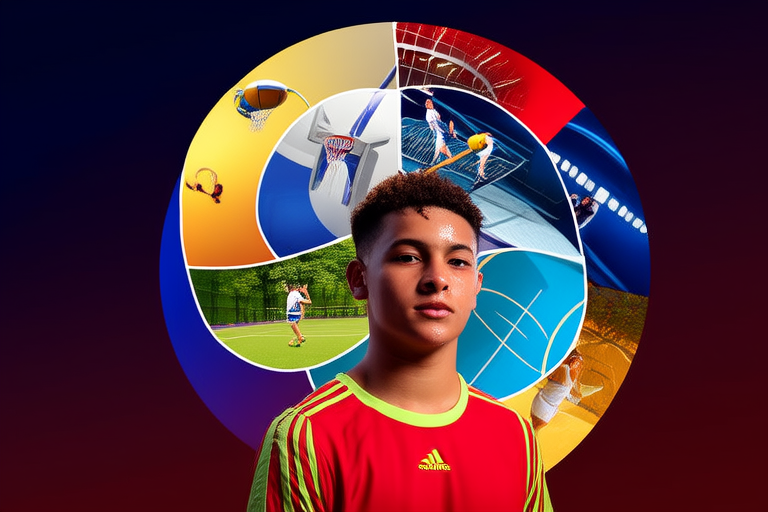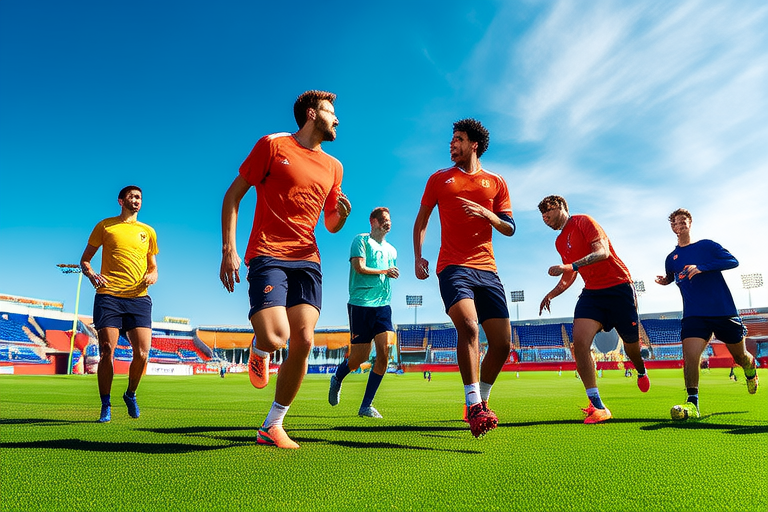Introduction to the Diverse World of Sports: Exploring Different Types and Their Benefits
Introduction
Sports have been an integral part of human culture for centuries, offering not only entertainment but also a means to improve physical health, mental well-being, and social connections. From ancient Olympic games to modern-day competitions, sports continue to evolve, encompassing a wide array of activities that cater to diverse interests and abilities. This article delves into the vibrant world of sports by exploring four major categories: team sports, individual sports, water sports, and extreme sports. Each category offers unique experiences and benefits, making them appealing to people of all ages and backgrounds.
Team Sports: Building Unity and Cooperation
Team sports are characterized by their reliance on collaboration and coordination among players to achieve a common goal. Examples include soccer, basketball, volleyball, and cricket. These sports require individuals to work together, fostering teamwork and communication skills.
Physical Benefits
Engaging in team sports promotes cardiovascular fitness, muscular strength, and endurance. The dynamic movements involved, such as running, jumping, and quick directional changes, contribute to overall physical conditioning. For instance, soccer players develop agility and stamina through continuous play, while basketball enhances explosive power and hand-eye coordination.
Mental Benefits
Participating in team sports sharpens cognitive abilities like decision-making and strategic thinking. Players must assess situations quickly and adapt their actions accordingly. Additionally, the camaraderie and shared goals within a team setting can boost self-esteem and reduce stress levels.
Social Benefits
One of the most significant advantages of team sports is the opportunity to build strong interpersonal relationships. Athletes learn to trust and rely on one another, creating bonds that often extend beyond the field. These interactions help develop leadership qualities and teach valuable lessons about cooperation and accountability.
Individual Sports: Fostering Discipline and Self-Reliance
In contrast to team sports, individual sports focus on personal performance and achievement. Common examples include tennis, swimming, gymnastics, and track and field events. While these activities may lack direct interaction with teammates, they emphasize self-discipline and perseverance.
Physical Benefits
Individual sports offer targeted workouts that enhance specific aspects of physical fitness. For example, swimmers benefit from full-body engagement, improving muscle tone and flexibility. Gymnasts develop incredible core strength and balance, while runners build leg muscles and aerobic capacity. These sports allow participants to tailor their training regimens to suit their needs and goals.
Mental Benefits
The solitary nature of individual sports cultivates mental toughness and resilience. Athletes must overcome challenges independently, which strengthens problem-solving skills and determination. Competing against oneself or others fosters a sense of accomplishment and boosts confidence. Moreover, the concentration required during practice and competition enhances focus and mindfulness.
Social Benefits
Although individual sports prioritize personal effort, they still provide opportunities for social interaction. Training facilities, tournaments, and clubs bring athletes together, enabling them to form friendships and share experiences. Networking with fellow competitors can inspire growth and create a supportive community.
Water Sports: Embracing Adventure and Serenity
Water sports take place in aquatic environments and range from leisurely pursuits to adrenaline-pumping adventures. Popular examples include swimming, surfing, kayaking, and scuba diving. These activities connect participants with nature while providing both relaxation and excitement.
Physical Benefits
Water-based activities engage multiple muscle groups, promoting total-body fitness. Swimming, for instance, is considered one of the best low-impact exercises, benefiting heart health and joint mobility. Surfing builds upper body and core strength, while kayaking improves arm and shoulder endurance. Scuba diving encourages controlled breathing and enhances lung capacity.
Mental Benefits
The calming effects of water make these sports ideal for reducing anxiety and promoting mental clarity. Being surrounded by natural elements has a soothing impact, helping individuals unwind and recharge. Water sports also encourage mindfulness, as participants must remain fully present to navigate their surroundings safely.
Social Benefits
Many water sports are enjoyed in group settings, fostering camaraderie and shared experiences. Whether it’s paddling alongside friends in a kayak or joining a swim club, these activities create opportunities for bonding. Group excursions and lessons further expand social circles, allowing enthusiasts to meet like-minded individuals.
Extreme Sports: Pushing Limits and Seeking Thrills
Extreme sports are known for their high-risk, high-adrenaline nature, attracting thrill-seekers who crave adventure. Examples include rock climbing, skydiving, snowboarding, and BMX racing. These sports challenge participants to push their boundaries and embrace uncertainty.
Physical Benefits
Engaging in extreme sports demands peak physical condition, as athletes must possess strength, agility, and reflexes to handle unpredictable scenarios. Rock climbers develop exceptional grip strength and balance, while snowboarders hone their coordination and spatial awareness. The rigorous training required for these activities ensures comprehensive fitness gains.
Mental Benefits
Extreme sports test mental fortitude, teaching participants how to manage fear and stay calm under pressure. Overcoming obstacles and taking calculated risks builds confidence and resilience. Many athletes report feeling a profound sense of freedom and empowerment after conquering challenging feats.
Social Benefits
Despite their solo nature, extreme sports often involve communities of enthusiasts who support and motivate one another. Events and competitions bring together individuals with similar passions, creating networks of encouragement and inspiration. Sharing stories of triumph and overcoming adversity strengthens these bonds.
Conclusion
The world of sports is vast and varied, offering something for everyone regardless of age, skill level, or preference. Team sports foster unity and cooperation, individual sports promote discipline and self-reliance, water sports blend adventure with tranquility, and extreme sports challenge limits and ignite passion. Each category provides distinct physical, mental, and social benefits, contributing to holistic well-being. By exploring different types of sports, individuals can discover new ways to stay active, connect with others, and enrich their lives. So whether you’re scoring goals on the soccer field, perfecting your backstroke in the pool, or scaling towering cliffs, remember that every sport has something valuable to offer.










